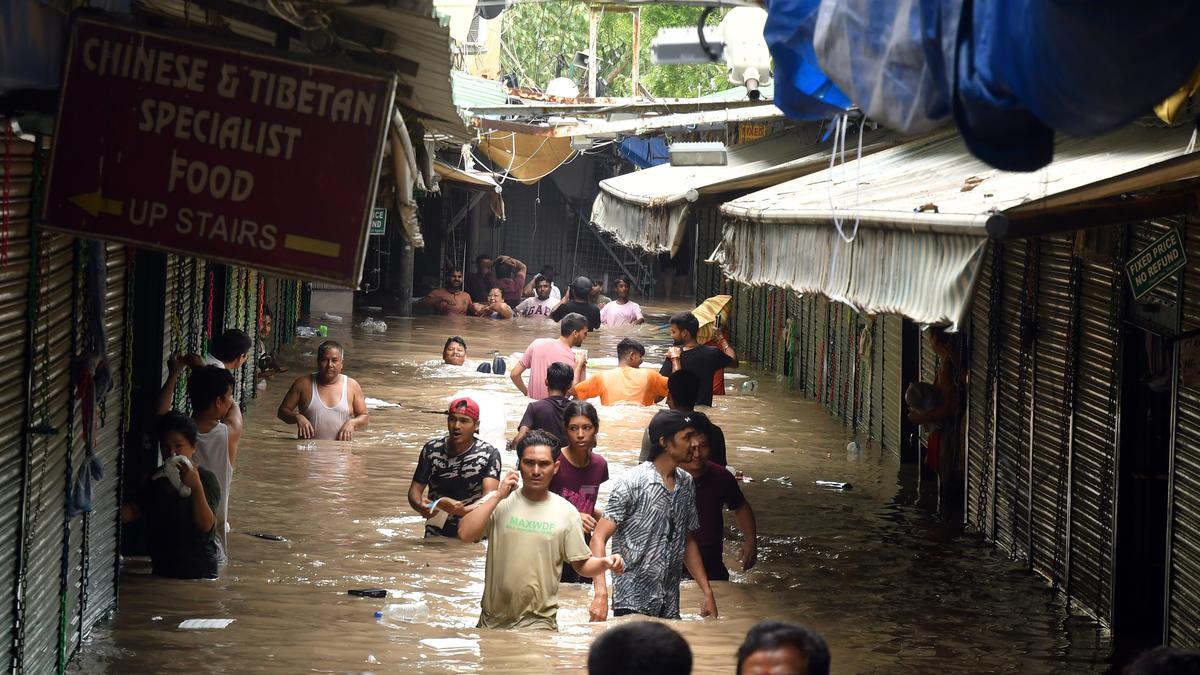
Delhi is battling one of its worst monsoon seasons in recent memory as the Yamuna River continues to swell, inundating neighborhoods and forcing thousands of people from their homes. For families in flood-prone areas, the advancing waters have been a slow but relentless enemy, swallowing homes and livelihoods inch by inch.
The Flood Situation Intensifies
The water level of the Yamuna has surged beyond the danger mark following continuous rainfall and heavy inflows from neighboring Haryana. As a result, low-lying areas along the river have been submerged. Residents in places like Mayur Vihar, Kashmere Gate, and low-lying villages near the riverbanks describe how the water crept steadily into their homes before rising waist-deep within hours.
Boats, buses, and even army trucks have been deployed to rescue stranded families. Some residents, unwilling to abandon their possessions, remain on rooftops or upper floors, waiting for help. For many, the pace of flooding has been so gradual that their belongings were damaged long before evacuation was possible.
Displacement and Human Suffering
The floods have displaced thousands, with makeshift camps now housing families who left behind everything they owned. Relief workers report shortages of basic necessities such as food, medicines, and clean drinking water. Many evacuees depend on volunteers and non-governmental organizations for daily supplies.
Children are among the worst affected. Disrupted schooling, crowded shelters, and health risks add layers of trauma to their displacement. Elderly citizens, many with pre-existing illnesses, struggle to cope with unhygienic conditions in relief camps.
Official Measures and Relief Camps
The Delhi government has deployed the National Disaster Response Force (NDRF) and local emergency services to coordinate evacuations. Nearly two dozen relief camps have been set up, offering food, water, and medical aid. Yet reports from the ground suggest a mismatch between demand and supply, with residents often complaining about inadequate provisions.
Efforts are also underway to divert excess water safely. Authorities are in touch with the Haryana government to regulate the release of water from the Hathnikund barrage, which significantly influences Yamuna’s flow into Delhi. However, unpredictable rainfall in the upstream catchment areas continues to complicate planning.
Infrastructure Paralysis
The floods have brought daily life in several parts of Delhi to a standstill. Submerged roads have caused massive disruptions to traffic, leaving commuters stranded for hours. The iconic Ring Road, along with arterial routes connecting East and Central Delhi, remains heavily waterlogged. Metro services on certain stretches have been scaled back, while bus services are being rerouted.
Power cuts, damaged water pipelines, and interrupted mobile networks have further added to the chaos, making it difficult for families to stay connected or access emergency help.
Underlying Causes of the Crisis
Urban planners point out that Delhi’s flood woes are worsened by decades of unplanned construction and neglect of natural drainage systems. Encroachment on floodplains has reduced the Yamuna’s carrying capacity, while silt accumulation has further raised water levels. Climate change, with increasingly erratic monsoon patterns, has only made the situation more unpredictable.
Public Voices and Stories of Loss
Stories emerging from relief camps highlight the scale of human suffering. Families recount losing entire homes, livestock, and savings in a matter of days. Migrant workers and small shopkeepers say the floods have erased months of hard-earned income. Despite the hardships, many residents remain resilient, helping each other survive through community kitchens and volunteer support.
Economic and Environmental Impact
The economic costs are expected to run into hundreds of crores, considering damages to public infrastructure, private property, and agricultural fields. Crops along the Yamuna floodplain, a critical supply source for the city’s vegetable markets, have been completely destroyed. Environmentalists warn that repeated flooding will worsen soil erosion and reduce the fertility of floodplain lands.
